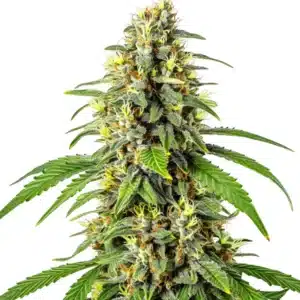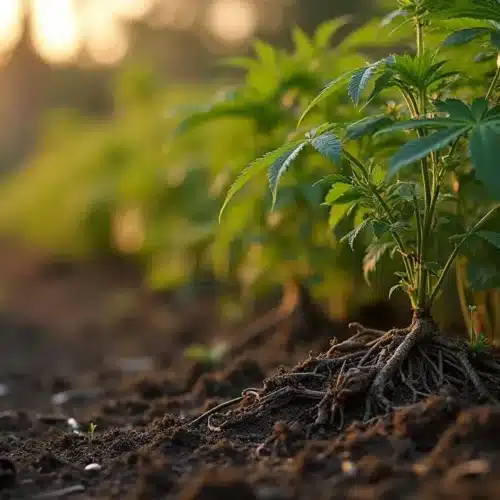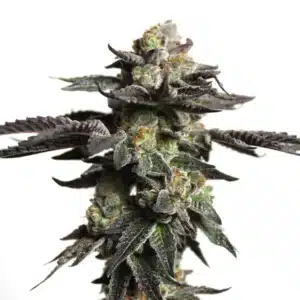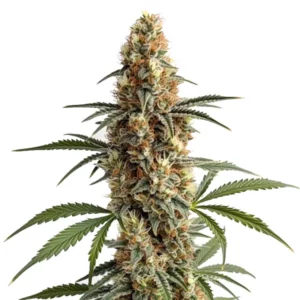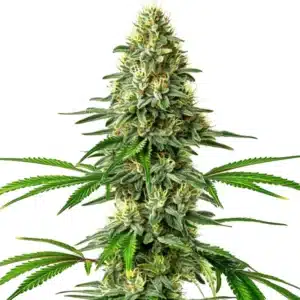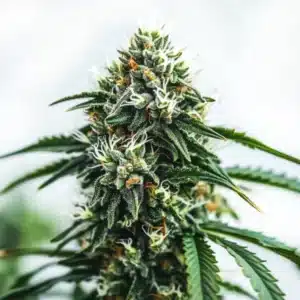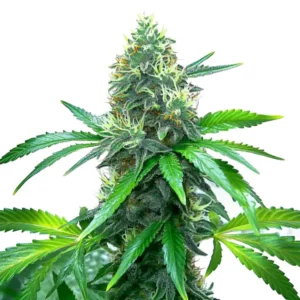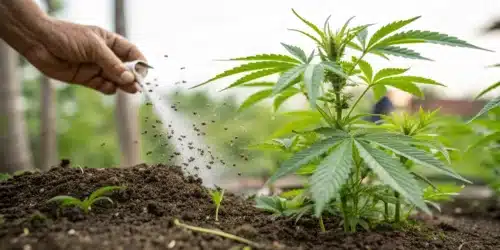Cannabis cultivation can be challenging, especially when pests like root nematodes decide to invade. These microscopic worms love to feast on your cannabis plants’ roots, causing significant damage. Whether you’re a first-time grower or an experienced cultivator, dealing with root nematodes cannabis can be a real headache.
Root nematodes are tiny, but their impact is anything but small. They can cause stunted growth, yellowing leaves, and even plant death. These pests suck out the nutrients from the plant roots, which can drastically affect your cannabis yield. Knowing how to identify and handle these pests is crucial for healthy cannabis root health and nematodes management.
Root nematode infestation in cannabis is more common than you might think. If you notice your plants struggling despite proper care, it’s worth investigating the roots. Sometimes, the problem lies beneath the soil, invisible to the naked eye but significant enough to ruin your crop. Let’s dive into how you can prevent and control these pesky nematodes.
Identifying Root Nematodes in Cannabis
Spotting root nematodes can be tricky. They are not visible without a microscope, but their effects on cannabis plants are clear signs. If your plants show uneven growth, wilting, or chlorosis, it might be time to check for nematodes. Start by examining the roots carefully.
Healthy roots are white and firm. If you notice galls or knots on the roots, it’s likely you’re dealing with a root nematode infestation in cannabis. These galls are the nematodes’ calling cards, indicating where they have burrowed into the root tissue. Catching them early can save your plants.
In addition to physical signs, monitoring plant health regularly can help in early identification. Using soil tests and observing nutrient deficiencies can provide hints of a lurking nematode problem. Early detection allows for timely interventions, preventing further damage to cannabis root health and nematodes-related stress.
Advanced detection methods, such as molecular diagnostics, are becoming more common. These techniques can accurately identify nematode presence before physical symptoms appear, providing a proactive approach to managing root nematodes cannabis infestations.
Signs of Root Nematode Damage
Yellowing leaves are often the first sign that something is wrong. As nematodes feed on the roots, the plant struggles to absorb water and nutrients. This stress shows up as nutrient deficiencies, even if you’re providing adequate nutrition.
Stunted growth is another red flag. If your cannabis plants aren’t growing as expected, root nematodes could be at fault. These pests inhibit the root system’s ability to expand and flourish, leading to smaller plants.
The root nematodes impact on cannabis yield is significant, as their feeding habits directly undermine plant health. Affected plants may also have an increased susceptibility to other diseases, compounding the damage caused by nematodes and reducing overall plant vigor.
In cases of severe infestation, plants may exhibit wilting and eventual death. This is due to the extensive root damage that disrupts the plant’s ability to transport water and nutrients, making it critical to address the issue as soon as signs are evident.
Promos & Deals
Preventing Root Nematodes in Cannabis Plants
Prevention is always better than cure, especially when it comes to root nematodes. Start with clean, nematode-free soil. Many growers opt for sterilized or pasteurized soil to minimize the risk of infestation. This simple step can make a big difference.
Crop rotation is another effective strategy. By changing the location of your cannabis plants or alternating with non-host crops, you disrupt the nematodes’ lifecycle. This method helps in preventing root nematodes in cannabis plants by reducing their numbers over time.
Implementing good hygiene practices, such as cleaning tools and pots, can also prevent nematode spread. Ensuring that equipment is sanitized reduces the risk of transferring root nematodes cannabis from one area to another, safeguarding your cultivation efforts.
Utilizing cover crops that naturally repel nematodes can further enhance your prevention strategy. Plants like marigolds and mustard have properties that deter nematodes, providing an organic method to keep these pests at bay in your cannabis garden.
Choosing Resistant Strains
Not all cannabis strains are equally susceptible to root nematodes. Some strains have natural resistance, making them a smart choice for growers concerned about these pests. The “Mamba Negra” strain from Blimburn Seeds is known for its robust root system, which can withstand nematode attacks better than others.
Another excellent choice is the “Zombie Death Fuck” strain. Its hardy nature and vigorous growth make it less vulnerable to root nematodes, giving you a higher chance of a successful harvest. Opting for resistant strains is a proactive way to protect your cannabis cultivation.
Choosing strains with a strong genetic background can further enhance resistance. These strains are bred specifically to withstand adverse conditions, including pest invasions, thereby reducing the likelihood of root nematode infestation in cannabis.
Breeding programs focused on enhancing nematode resistance can lead to even more effective strains. By selecting for traits that deter nematodes, breeders are contributing to long-term solutions for controlling nematodes in cannabis cultivation.

Controlling Nematodes in Cannabis Cultivation
Once root nematodes have been detected, control becomes the focus. Biological control methods involve introducing beneficial organisms that prey on nematodes. Predatory nematodes are a popular choice as they target the harmful ones without harming your plants.
Chemical nematicides are another option, but they should be used with caution. These chemicals can be harsh and might impact the overall soil health. Always follow the instructions and consider the environmental impact before use.
Integrated pest management (IPM) strategies are highly effective for controlling nematodes in cannabis cultivation. Combining biological controls with cultural practices and minimal chemical use ensures a balanced approach to pest management.
Regular soil testing and monitoring are essential components of controlling root nematodes. By keeping track of nematode populations, growers can implement timely interventions, ensuring the health and productivity of their cannabis crops.
Improving Soil Health
Healthy soil is your first line of defense against root nematodes. Enriching your soil with organic matter boosts its health, making it more resilient to pests. Compost, aged manure, and cover crops can all contribute to a healthier soil ecosystem.
Consider adding beneficial microbes to your soil. Products containing mycorrhizal fungi and beneficial bacteria can improve root health and offer some protection against nematodes. These microbes work symbiotically with your cannabis plants, enhancing nutrient uptake and root resilience.
Soil aeration is another key factor in maintaining a healthy growing environment. Proper aeration encourages beneficial microbial activity, which can help suppress root nematodes cannabis by fostering a robust soil ecosystem.
Monitoring soil pH and nutrient levels is crucial for optimal plant health. Balanced soil conditions not only promote vigorous growth but also reduce the susceptibility of plants to nematodes and other stressors, supporting overall cannabis root health and nematodes management.
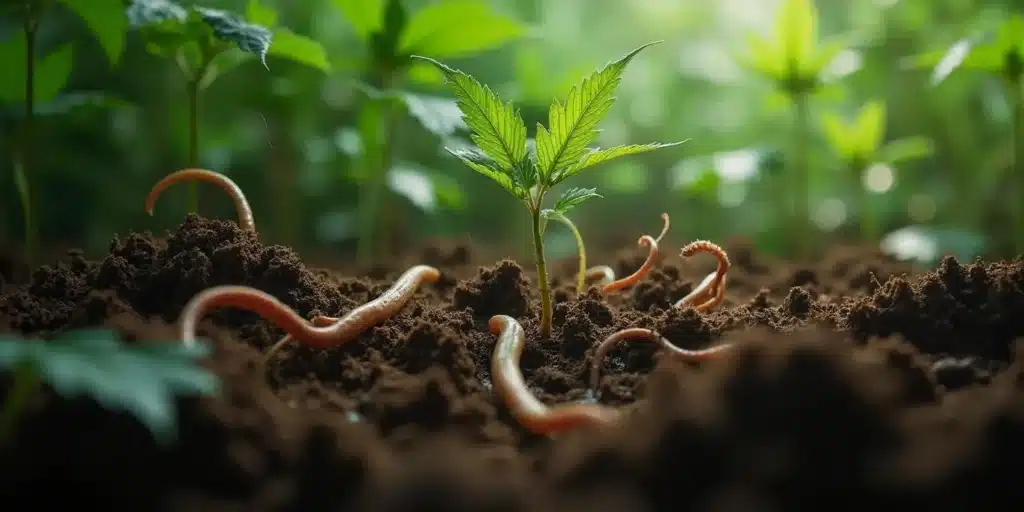
FAQs About Root Nematodes in Cannabis
How do root nematodes impact cannabis yield?
Root nematodes can severely affect cannabis yield by damaging the root system. When nematodes feed on the roots, they impair the plant’s ability to absorb water and nutrients. This stress results in poor plant growth and reduced yields.
The lack of nutrients and water due to nematode damage can cause the plants to produce fewer flowers. This directly translates to a lower harvest, impacting both quality and quantity. Effective management is necessary to protect your yield.
Beyond reducing flower production, root nematodes impact on cannabis yield by making plants more vulnerable to secondary infections. This susceptibility can lead to additional losses, emphasizing the importance of effective nematode management strategies.
Employing a mix of resistant strains and soil health practices can mitigate these impacts, ensuring that your cannabis plants reach their full yield potential even in the presence of nematodes.
Can I completely eliminate root nematodes from my garden?
Completely eradicating root nematodes from a garden is challenging. These pests are persistent and can survive in soil for long periods. However, you can significantly reduce their numbers and manage their impact through a combination of preventive and control measures.
Utilizing resistant strains, improving soil health, and using biological controls can help keep nematode populations in check. Regular monitoring is essential to manage any outbreaks promptly and effectively.
Implementing a comprehensive IPM strategy can make a significant difference. By combining cultural, biological, and chemical controls, you can minimize the impact of root nematode infestation in cannabis, keeping your garden healthy and productive.
Continuous education and adaptation of new management techniques are vital. Staying informed about the latest research and practices can help you maintain control over nematodes and ensure the success of your cannabis cultivation efforts.
What are the best practices for preventing root nematodes in cannabis?
Start with clean, sterilized soil to reduce the initial risk of infestation. Rotate crops and use resistant cannabis strains to hinder nematode development. These practices are effective in preventing root nematodes in cannabis plants.
Improving soil health with organic matter and beneficial microbes can also help. By maintaining a healthy soil ecosystem, you create an environment less conducive to nematode survival and reproduction.
Regularly inspecting the root systems of your plants can aid in early detection and prevention. By catching issues before they escalate, you can implement timely solutions to protect your cannabis crops from nematode damage.
Incorporating nematode-resistant cover crops into your rotation plan can add an extra layer of prevention. These plants offer a natural barrier against nematodes, supporting your efforts to maintain a nematode-free growing environment.
Are there natural remedies to control root nematodes in cannabis?
Yes, there are several natural remedies available. Predatory nematodes are a popular biological control that can reduce harmful nematode populations. These beneficial nematodes don’t harm plants and can be an effective part of an integrated pest management strategy.
Adding organic matter to the soil can also help. Compost and green manure improve soil structure and health, making it less favorable for nematodes. These natural methods can be used in conjunction with other control measures for best results.
Neem oil and other plant-based extracts can serve as additional natural deterrents. These treatments can help suppress nematode activity without the need for harsh chemicals, aligning with sustainable cultivation practices.
Mulching with organic materials can create a less hospitable environment for nematodes. By maintaining soil moisture and temperature, mulch supports beneficial organisms that can naturally keep nematode populations in check.
Do different cannabis strains have varying resistance to root nematodes?
Yes, different strains can have varying levels of resistance. Some strains, like “Mamba Negra” and “Zombie Death Fuck” from Blimburn Seeds, are known for their robust root systems. These strains can resist nematode attack better than others.
Choosing resistant strains is a proactive way to manage root nematodes. It reduces the likelihood of severe infestations and helps ensure a healthy harvest. Always consider the resilience of a strain when planning your cannabis cultivation.
Genetic advancements continue to improve strain resistance. Breeders are consistently working to develop new strains with enhanced defenses against root nematodes cannabis, offering growers more options for resilient cultivation.
Consulting with seed banks and breeders can provide insights into the best strains for your specific growing conditions. By selecting the right strains, you can optimize your chances of a successful, nematode-free cannabis harvest.




